
Focus checker

End of 2016. I recently encountered problems with a camera on which the mirror was out of adjustment, the focus did not correspond with the image obtained. This adjustment is difficult to make, you have to put a frosted glass at the film level and adjust the height of the mirror so that the focus corresponds. But you can't see much on the frosted glass at the level of the film.
So I wondered if there would be a way to make a more accurate tool, from a webcam which sensor would be placed at the level of the film.
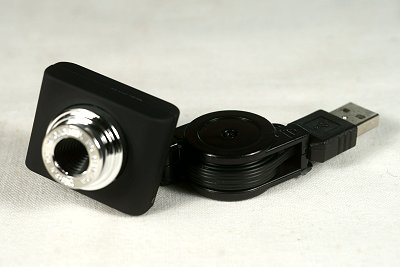 I bought in China, on ebay, a "first price" webcam(less than 2 € shipping included).
I bought in China, on ebay, a "first price" webcam(less than 2 € shipping included).
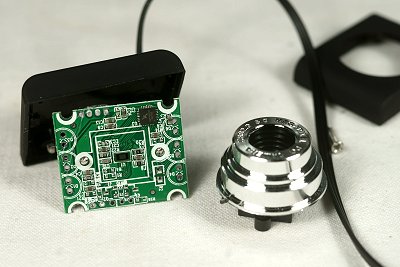 This webcam is easy to disassemble, two screws to open, and two more screws to remove the lens. The electronic card is small, the sensor is about 2mm wide, and the opposite side to the components is bald, except for the connection of USB cable.
This webcam is easy to disassemble, two screws to open, and two more screws to remove the lens. The electronic card is small, the sensor is about 2mm wide, and the opposite side to the components is bald, except for the connection of USB cable.
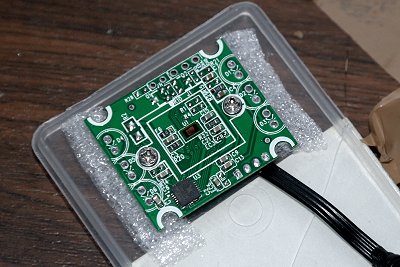 Here is my prototype, the sensor is screwed into the cover of a box for screws. By playing on the tightening of the screws and the thickness of the foam, I can approach the setting to infinity.
Here is my prototype, the sensor is screwed into the cover of a box for screws. By playing on the tightening of the screws and the thickness of the foam, I can approach the setting to infinity.
 I did my tests in a Zenit TTL.
I did my tests in a Zenit TTL.
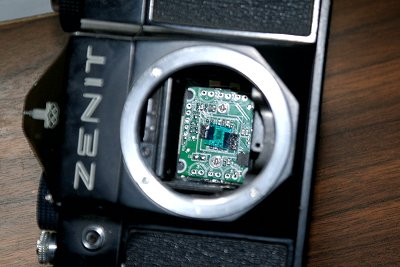 The first tests are very red. Obviously, the sensor is sensitive to infrared, and the low-pass filter that must be placed in front is in fact included in the removed lens. I retrieved a low-pass filter from a VHS camera wreckage, and I secured it with two small pieces of adhesive foam. Now the colors are good. Double advantage: The components are very close to the chassis of the camera and can short-circuit, the introduction of a "flat diopter" in front of the sensor shifts the focus, I can put it more backwards and there is no longer risk for it to touch.
The first tests are very red. Obviously, the sensor is sensitive to infrared, and the low-pass filter that must be placed in front is in fact included in the removed lens. I retrieved a low-pass filter from a VHS camera wreckage, and I secured it with two small pieces of adhesive foam. Now the colors are good. Double advantage: The components are very close to the chassis of the camera and can short-circuit, the introduction of a "flat diopter" in front of the sensor shifts the focus, I can put it more backwards and there is no longer risk for it to touch.
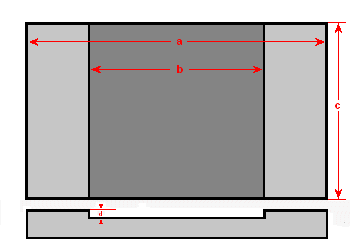 I can now make a drawing of the final support, and send it to my friend Didou (with a piece of gray PVC) for a precise fabrication.
I can now make a drawing of the final support, and send it to my friend Didou (with a piece of gray PVC) for a precise fabrication.
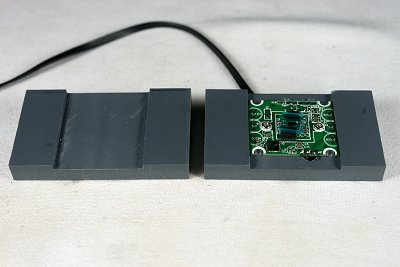 I received two supports! I can now do the assembly: drilling the passage of the wires and screwing to the support. The assembly requires to desolder the USB cord for the passage of the wire (and to re-solder it!).
I received two supports! I can now do the assembly: drilling the passage of the wires and screwing to the support. The assembly requires to desolder the USB cord for the passage of the wire (and to re-solder it!).
 A square of felt in front to protect.
A square of felt in front to protect.
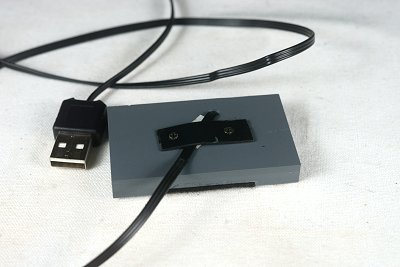 And behind a screwed tab to avoid pulling of the wires.
And behind a screwed tab to avoid pulling of the wires.
Here it is, in theory the tester is ready. I had planned to use sheets of paper behind the sensor for precise adjustment of the distance setting, but surprise, the setting is perfect at first time!
For the second try, another surprise, but bad: the CCD sensor took a hit and detached, the electronic card is dead! So I bought two other webcams, and remade my assembly, which will now be packed in cotton when not in use!